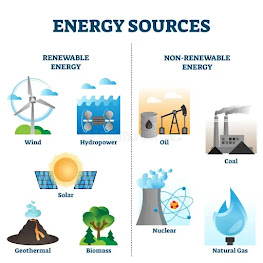Plumbing
Weekly Summary
As Americans, we are unbelievably blessed to have clean water and convenient plumbing systems; indoor plumbing truly is a luxury, and a fairly recent one actually with related patents not reaching the U.S. until the 1900s. As the book discussed, access to clean water is unfortunately a global dilemma, primarily in underdeveloped countries. That being said, even in the U.S., water waste and sustainability are topics worthy of consideration. Despite possible concerns, there have been a variety of solutions as it pertains to plumbing and sustainability which I will mention later on.The definition of a plumbing system is the introduction and elimination of water and human byproducts to and from a building. In a plumbing system, there are two operations being completed. First, a clean water supply enters the building through pipes, relying on pressure to be pushed up through all pipes and fixtures. Second, the Drain-Wast-Vent (DWV) system relies on gravity and sloped pipes to drain used water, waste, and the associated odors. Water can be supplied from one of three sources: 1) a municipal water supply, 2) a private well, or 3) harvested rainwater. Sewage systems consist of Wetlands, Sewage treatment plans, and septic tanks. Additionally, the DWV system sorts water into three categories: potable (drinkable) water, black water (contains sewage), and gray water (waste water from sinks, bathtubs, washing machines, etc.)
Each plumbing fixture has various water conservation options:
Toilets, which are technically the single largest use of interior water, are legally required to use less water than past toilets, and high-efficiency toilets are capable of using less than 1.28 gallons of water per flush. Duel-flushing toilets include a mechanism with two flushing options depending on the required amount of water needed.
Urinals are a fairly sustainable fixture, and waterless urinals don't use any water at all; however, they are often given a bad reputation because of the odors released into the bathroom. Low water urinals reduce water usage by 85%.
Sinks and faucets have a wide variety of options for sustainability: automatic faucets, gray water reuse (for flushing toilets), light powered faucets (no electricity needed), low flow shower heads, etc. Other miscellaneous sustainable plumbing products include tankless hot water heaters, composting toilets, and energy-efficient hand dryers.
As Interior Designers it's important to be aware of the location of plumbing for space planning features and to understand the limitations of what is practical and economical. When designing a bathroom or kitchen or entire residence, some practical solutions include having a shared plumbing wall (a.k.a. a chase wall) and stacking plumbing between floors of a building.
Accessible Bathroom Design Examples + Considerations
For my three images/ examples of accessible design, I chose one commercial example, one residential example, and then one example bathroom design floor plan.
When designing for accessibility, there are three primary considerations: 1) the width and room for wheelchair accessibility and mobility; 2) the reachability of handicapped persons in wheelchairs (this affects door handles and sink heights; 3) safety features such as handlebars. When designing for accessibility, it is imperative that you adhere to ADA regulations. In the floor plan, you can see that the designer accounted for the full rotational width of the wheelchair. In both the residential and commercial bathroom images, you can see the use of handlebars in shower, toilet, and sink locations. As Interior designers, with the goal of creating the human experience, it is essential to consider handicapped individuals, especially in certain spaces like public restrooms.


.jpg)





Delia,
ReplyDeleteYour blog post does a great job of highlighting the importance of clean water and plumbing systems in our daily lives, while also emphasizing their significance as a luxury that should not be taken for granted. You also provided a neat prospective on plumbing systems, water sources, and water conservation options, showing how sustainability is integrated into interior design. The consideration of accessible design for individuals with disabilities was very informative, emphasizing the need to adhere to ADA regulations and create spaces that cater to everyone's needs. Nice job!
Delia,
ReplyDeleteI really liked your information on this blog and the depth you went into explaining the different areas that plumbing consists of such as faucets and toilets. I liked the examples you have provided and how they are ADA recommended by using hand rails and allowing wide walking space.
Delia,
ReplyDeleteI liked your opening paragraph about the importance of pluming and how it impacts interior design greatly. I appreciated how you talked about the sustainability process of plumbing and how it still needs to be modified even today. You did a great job explaining the types of plumbing fixtures we use and gave a clear understanding of how all of them work. I liked the accessible bathroom choices you displayed, you did a great job listing all the factors of how they are excellent designs for disabled people.
Delia,
ReplyDeleteOutstanding blog entry. I liked how you introduced the topic reminding us that clean water and plumbing is luxury. You went into great detail describing the plumbing system and process and reminding us what can be done to make sustainable choices.
You three examples of accessible bathrooms were great!
Well Done. 50/50 POINTS